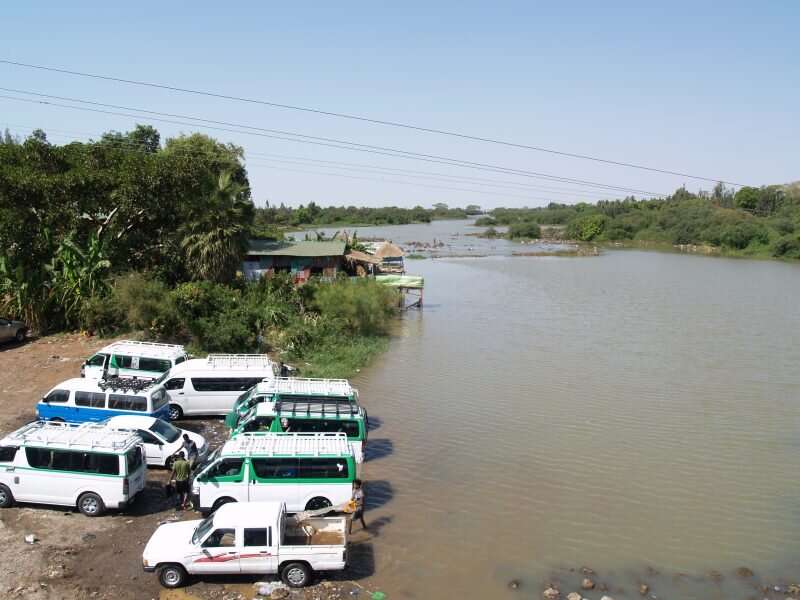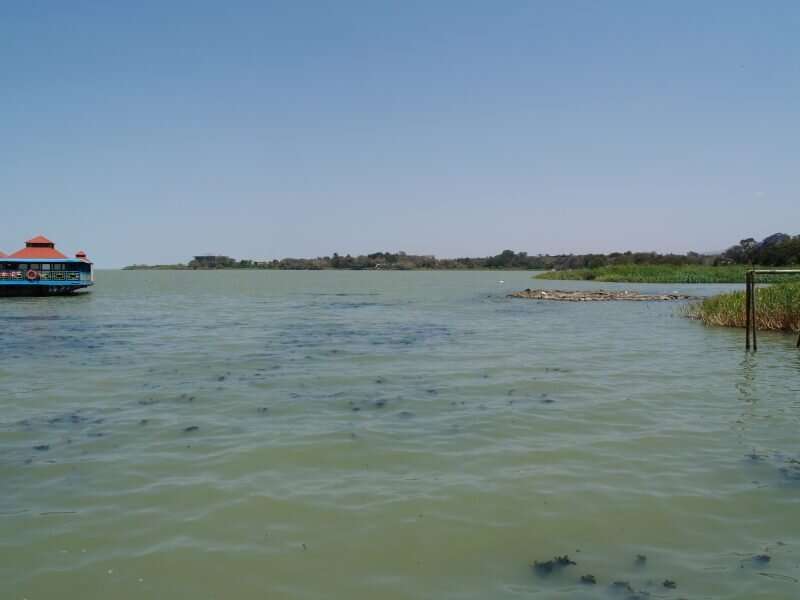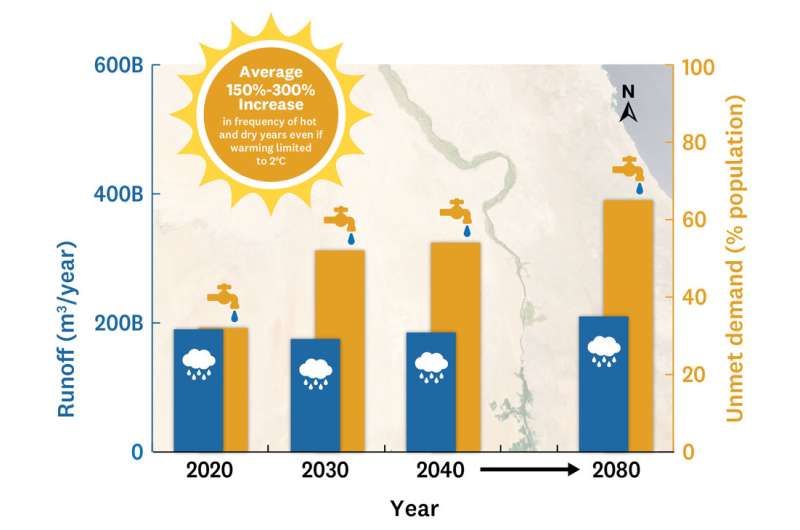Upper Nile will experience more water scarcity due to hotter, drier periods

An increase in hotter, drier years in the coming decades due to climate change may worsen water scarcity issues in the Upper Nile Basin, according to new research.
These impacts are likely to cause an increase in agricultural failure in Ethiopia and may potentially lead to civil strife, according to the authors of a new study published in Earth's Future, a journal of the American Geophysical Union.
"This region is already on the verge of water scarcity," said Ethan Coffel, a post-doctoral researcher in geography and earth sciences at Dartmouth College in Hanover, New Hampshire, and the lead author of the new study. He added that the region's population is also growing rapidly, adding to the potential for problems down the road.
Climate models generally agree that rainfall will increase by roughly 10 percent by 2080 in the regions around the upper branches of the Nile River. As a result, some have predicted water scarcity, or water availability per capita, will decrease in the area in coming decades.
But Coffel and his co-authors looked deeper at the models and found that while rainfall will increase on average, projections show years experiencing year-long average temperatures hotter than 22 degrees Celsius (71.6 degrees Fahrenheit) and below about 106 millimeters (4.2 inches) of rain per year will double or triple in frequency by 2080. Such high average temperatures currently only occurs one of every five years in the area.

What this means in practice is that the rainier years will experience more rain, but the dry, hot years will be drier and hotter.
"You just get more extremes. You'll get more floods and you'll also get more droughts," Coffel said.
Beyond just predicting hot and dry periods, the scientists wanted to see what the human impacts of future climate change will be. Since most of the region's agriculture is rain-fed, years experiencing less precipitation will experience more water scarcity, especially when combined with higher numbers of people. Coffel said the population in the area is projected to double by 2100.
Less rain means also means higher crop variability and a higher chance of crop failure, Coffel said.
The researchers looked at periods of past crop yields in Ethiopia, the country for which they had the longest dataset, and correlated them with dry and hot periods. They found nearly every year with bad crop yields was hot and dry.

While there may have been other reasons than just the weather responsible for bad crop yields, Coffel said the data shows a clear correlation.
Furthermore, while civil strife can result in crop failure, Coffel pointed out agricultural shortages can also lead to political problems.
"Agricultural failure drives societal changes that may encourage conflicts," he said.
The way projected population increases will affect and be affected by future water scarcity still has a lot of uncertainties, Coffel said, since water scarcity could be a limiting factor on population increases. While the agricultural data they looked at was only long enough to analyze in Ethiopia, Coffel said these problems are likely to ring true in other countries in the upper Nile like Uganda and South Sudan.
The projected changes may also affect international relations, since countries downriver on the Nile like Egypt already have disputes with Ethiopia over dam construction and water usage.
"If you have increased water scarcity in the region in general, everybody will be more inclined to try to keep as much as they can," Coffel said.
More information: Ethan D. Coffel et al. Future Hot and Dry Years Worsen Nile Basin Water Scarcity Despite Projected Precipitation Increases, Earth's Future (2019). DOI: 10.1029/2019EF001247
Provided by American Geophysical Union
This story is republished courtesy of AGU Blogs (http://blogs.agu.org), a community of Earth and space science blogs, hosted by the American Geophysical Union. Read the original story here.




















